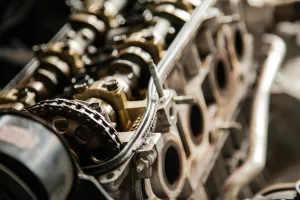When it comes to acquiring a new vehicle, one of the most important decisions you’ll face is whether to lease or buy the car. Both options have their own set of advantages and disadvantages, and the best choice depends largely on your personal circumstances, driving habits, and financial goals. Some people prefer the flexibility and lower upfront costs associated with leasing, while others value the long-term financial benefits and ownership that come with purchasing a car.
In this article, we’ll explore the key differences between leasing and buying a car, including factors such as cost, vehicle ownership, flexibility, maintenance, and long-term value. By the end, you should have a clearer idea of which option might be better suited to your needs and lifestyle.
1. Understanding Leasing vs. Buying
Before diving into the pros and cons, it’s important to understand the fundamental differences between leasing and buying a car.
Leasing a Car
When you lease a car, you essentially rent the vehicle from a dealership for a set period, typically between two to four years. You make monthly lease payments during the term of the lease, and at the end of the agreement, you return the car to the dealership. In some cases, you may have the option to purchase the car at the end of the lease, but otherwise, you don’t own the vehicle.
Leasing is often appealing because it allows you to drive a new car every few years without the commitment of long-term ownership. Lease payments are generally lower than car loan payments, and many leases come with warranty coverage that protects against unexpected repair costs. However, leases come with mileage limits, and there are restrictions on modifications and how the car can be used.
Buying a Car
When you buy a car, you either pay for it in full or finance it with an auto loan. If you take out a loan, you make monthly payments until the loan is paid off, and once the car is fully paid for, you own it outright. There’s no obligation to return the vehicle to a dealership, and you can keep it for as long as you want, sell it, or trade it in for a new one.
Buying a car offers the benefit of ownership, which means there are no mileage limits or restrictions on how you use or modify the vehicle. Additionally, once you pay off the car loan, you’re no longer making payments, which can lead to significant cost savings in the long term.
2. Cost Considerations
One of the biggest factors that people consider when deciding whether to lease or buy a car is the cost. While leasing often has lower monthly payments, the long-term financial implications of leasing versus buying can vary depending on your driving habits, the length of time you plan to keep the car, and your financial goals.
Leasing Costs
Leasing a car typically requires lower monthly payments compared to financing a car loan, making it an attractive option for people who want to drive a new car without the high upfront costs. Lease payments are calculated based on the depreciation of the vehicle during the lease term, as well as factors like the car’s residual value (the estimated value of the car at the end of the lease), the money factor (similar to an interest rate), and any fees.
While lease payments are lower, leasing does not build equity in the vehicle. At the end of the lease, you will need to return the car or pay additional fees to purchase it. Leasing also comes with additional costs, such as a down payment, security deposit, and disposition fee (a fee charged for returning the vehicle at the end of the lease). Additionally, you may be charged extra if you exceed the mileage limit or if the car has excessive wear and tear.
Buying Costs
When you buy a car, your monthly payments (if you finance it with a loan) are typically higher than lease payments because you’re paying off the full value of the vehicle over time, not just the depreciation. However, once the loan is paid off, you own the car outright, and you no longer have to make monthly payments. This means that buying a car can lead to long-term savings, especially if you keep the car for many years after the loan is paid off.
Buying a car also involves upfront costs, including a down payment, sales tax, and registration fees. While these costs can be higher than leasing, they are typically one-time expenses, whereas leasing may involve repeat costs every time you lease a new car.
In the long term, buying a car is generally more cost-effective if you plan to keep the vehicle for several years. Once the loan is paid off, you’re free from monthly payments, and you can continue to drive the car without incurring any further financial obligations. Additionally, you have the potential to sell the car or trade it in, allowing you to recoup some of the vehicle’s value.
3. Flexibility and Usage
Another key factor to consider is how flexible each option is when it comes to usage, mileage limits, and modifications.
Leasing Flexibility
Leasing provides flexibility in that you get to drive a new car every few years. This is appealing for those who enjoy driving the latest models and don’t want to worry about the vehicle losing value over time. Since you’re essentially renting the car for a set period, you don’t need to deal with the long-term maintenance costs or the hassle of selling the vehicle.
However, leasing comes with some notable restrictions. Most leases come with an annual mileage limit, usually around 10,000 to 15,000 miles per year. If you exceed this limit, you’ll be charged a fee for each extra mile, which can add up quickly if you drive a lot. If your job or lifestyle requires extensive driving, leasing may end up being more expensive due to these penalties.
Leasing also places restrictions on how you can customize or modify the vehicle. Since you don’t own the car, you’re typically not allowed to make significant changes, such as altering the paint color, installing custom parts, or making interior modifications. Additionally, when you return the vehicle at the end of the lease, you may be charged for excessive wear and tear if the car is not in the condition expected by the dealership.
Buying Flexibility
When you buy a car, you have full ownership and complete control over how you use and modify the vehicle. There are no mileage limits, so you can drive as much as you want without worrying about additional fees. This makes buying a car a better option for people who drive long distances regularly or for those who plan to keep the car for many years.
Ownership also gives you the freedom to modify the vehicle as you see fit. Whether you want to upgrade the stereo system, repaint the car, or install custom wheels, buying allows you to personalize your car to match your preferences. Additionally, you don’t have to worry about returning the car at the end of a contract, and if you take good care of the vehicle, you may be able to sell it for a good price down the road.
4. Maintenance and Repairs
Another factor that can influence whether leasing or buying is better is the maintenance and repair costs associated with car ownership.
Leasing Maintenance
One of the advantages of leasing is that most leases come with a manufacturer’s warranty, which typically covers the cost of repairs and maintenance for the duration of the lease term. Since lease terms are usually between two and four years, the car is often still relatively new and less likely to need major repairs. This can provide peace of mind for drivers who want to avoid unexpected repair costs.
However, you are still responsible for routine maintenance, such as oil changes, tire rotations, and brake replacements. Failing to keep up with regular maintenance can result in additional charges when you return the car at the end of the lease. Additionally, any excess wear and tear or damage to the vehicle that goes beyond normal usage may also result in extra fees.
Buying Maintenance
When you buy a car, you are responsible for all maintenance and repairs once the vehicle is no longer under warranty. While this can lead to higher costs in the long term—especially as the car ages and becomes more prone to mechanical issues—owning the car gives you the flexibility to choose how and when to handle repairs. Some buyers opt to purchase extended warranties to cover major repairs after the manufacturer’s warranty expires.
Over time, cars tend to depreciate, and maintenance costs can increase as components wear out. However, for buyers who plan to keep their cars for many years, investing in repairs may still be more cost-effective than leasing multiple vehicles over the same period.
5. Long-Term Value
One of the most significant differences between leasing and buying is the long-term value of each option. Leasing provides access to a new car for a set period, but it does not build equity, while buying allows you to own a car outright after you’ve paid off the loan.
Leasing and Depreciation
When you lease a car, you essentially pay for the depreciation of the vehicle during the lease term. Once the lease is over, you return the car and have no ownership interest in it. This means that, while leasing offers short-term financial flexibility, you don’t build any long-term value or equity in the vehicle. At the end of the lease, you’ll need to either lease another car or buy one, leading to continuous monthly payments if you continue to lease.
Buying and Building Equity
Buying a car allows you to build equity in the vehicle over time. Once you’ve paid off the loan, you own the car outright and no longer have monthly payments. At this point, any value the car retains is yours, and you have the option to keep the vehicle for as long as you like, trade it in for a new one, or sell it privately.
While cars depreciate over time, owning a car gives you more control over its long-term value. Even though the vehicle’s value decreases, you still own an asset that can be sold or traded. In contrast, leasing leaves you with nothing to show for your payments once the lease is over.
Conclusion: Is Leasing a Car Better Than Buying One?
Ultimately, whether leasing or buying a car is better depends on your financial situation, driving habits, and personal preferences.
Leasing is often a good option for those who value driving a new car every few years, prefer lower monthly payments, and want to avoid the hassle of selling or trading in a car. It’s also appealing for people who drive less and are comfortable with mileage limits and don’t mind restrictions on modifications.
On the other hand, buying a car makes more sense for those who want to build equity, prefer ownership, and plan to keep the car for many years. If you drive long distances, prefer the flexibility of ownership, or want to avoid recurring monthly payments after the car is paid off, buying may be the better option.
In the long term, buying tends to be more cost-effective, especially if you plan to hold onto the vehicle for several years after paying off the loan. However, for individuals who prefer the convenience and flexibility of leasing without the long-term commitment of ownership, leasing can be an attractive alternative. The key is to carefully evaluate your lifestyle, financial goals, and how you plan to use the vehicle before making your decision.




